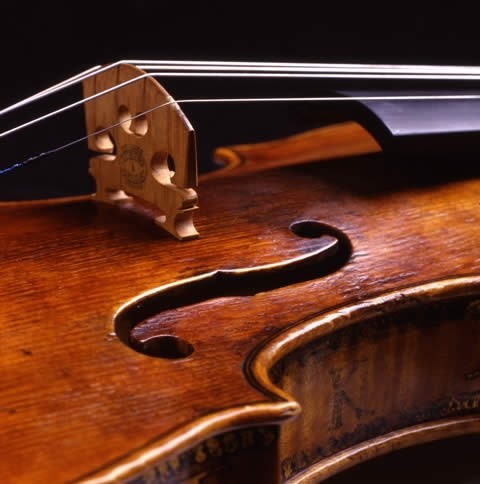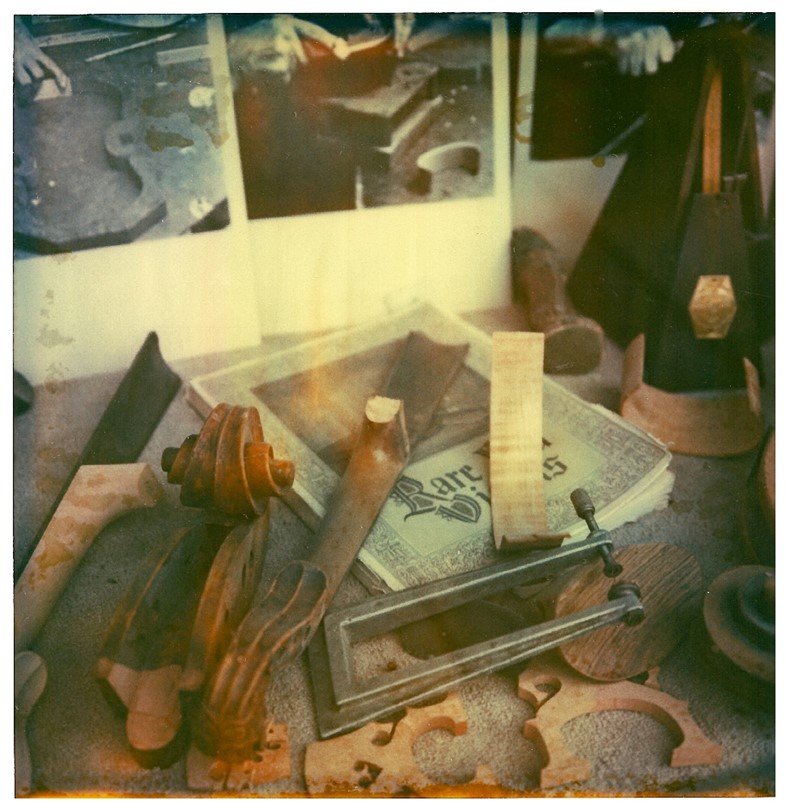Summary
On the world's oldest surviving violin, produced by Andrea Amati in 1564, you can see the same curly soundholes either side of the strings, like silhouettes of apple peel that you can see on any modern violin. And that's not because of tradition. It's because, in nearly five hundred years, no-one has been able to come up with a shape that works better. In fact, it's extraordinary how little has changed in any aspect of the design since that Amati built that instrument for Charles IX of France. In that case, though – if there was nothing left to improve – how is it that Antonio Stradivari, who died on this date in 1737, is so much more famous than Amati? Is it like Radiohead being so much more famous than Can? Actually, the answer is in the odd fact that while violins did, indeed, hardly change after the sixteenth century, they also changed utterly.
In the early 1700s, for instance, after decades of experimentation, Stradivari concluded that a flatter body can give a violin greater tonal power without making the instrument itself unacceptably fragile. The average person probably wouldn't notice the difference even on eye-crampingly close inspection. But it's a whole codex of details like that one which make Stradivari violins the best ever made. (When the young Soviet violinst Viktoria Mullova fled Finland for Sweden in 1983, she left her violin in the hotel room. As a result, her KGB minders wasted valuable hours on the assumption that she could not possibly be defecting. No musician would ever, ever leave behind a Strad.) It's this paradox – that the closer you come to perfection of physical form, the further away you also seem to be – that makes clear Stradivari's resonance with Jean-Baptiste Lamarck, the evolutionary biologist who also died on this date; and that's even before you remember that violins, like animals, have backs, necks, heads, ribs, bellies and waists.
Lamarck, of course, is one of those tragic scientists who are mostly now remembered for their wrongness. He believed in the inheritance of acquired characteristics: meaning that, for instance, an individual bird which is constantly spreading its toes when it lands on a lake will soon develop webbed feet, and it will pass those webbed feet on to its children. Darwin put paid to all that, but if we decide to think of it less as a sincere theory about life on earth than as a sort of philosophical whimsy about the way function begets form and form begets beauty, then perhaps it can tell us something about exactly what Stradivari's achievement might have been.
Another fellow who died on this date was Yulii Borisovich Khariton, the chief designer of the Soviet atomic bomb: I wonder if, when he looked upon his own awful creation in its dull steel casing, he felt the same as Stradivari did when he looked upon his Messiah violin.

Ned Beauman used to be Commissioning Editor at Another Man, writes often for Dazed & Confused and has contributed to the Guardian, the Financial Times, and many other publications. His debut novel Boxer, Beetle will be published by Sceptre in August 2010
